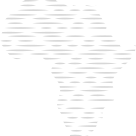Here you will find the open-access bii4africa dataset, which was co-produced by 200 experts in African biodiversity. It contains intactness scores representing the remaining proportion of intact populations of terrestrial vertebrates (tetrapods: ±5,400 amphibians, reptiles, birds, mammals) and vascular plants (±45,000 forbs, graminoids, trees, shrubs) in sub-Saharan Africa across the region’s major land uses (urban, cropland, rangeland, plantation, protected, etc.) and intensities (e.g., large-scale vs smallholder cropland).
We used the data for product a comprehensive assessment and map of Africa’s Biodiversity Intactness Index. Additional uses include assessing ecosystem condition; rectifying geographic/taxonomic biases in global biodiversity indicators and maps; and informing the Red List of Ecosystems.
You can also learn more about the landscapes in which these experts work by exploring this google earth story.
Clements et al. 2024. The bii4africa dataset of faunal and floral population intactness estimates across Africa’s major land uses. Scientific Data. 11, 191. https://doi.org/10.1038/s41597-023-02832-6
